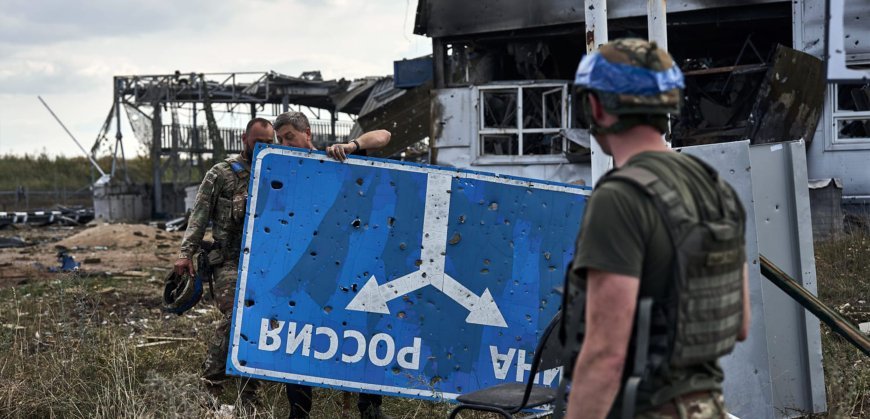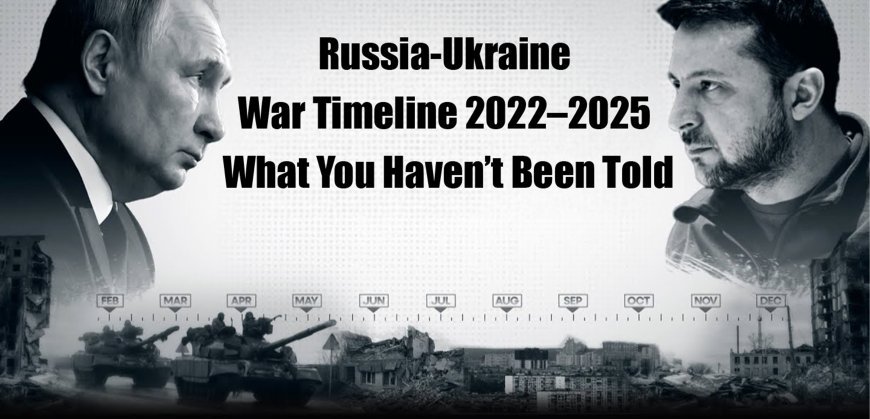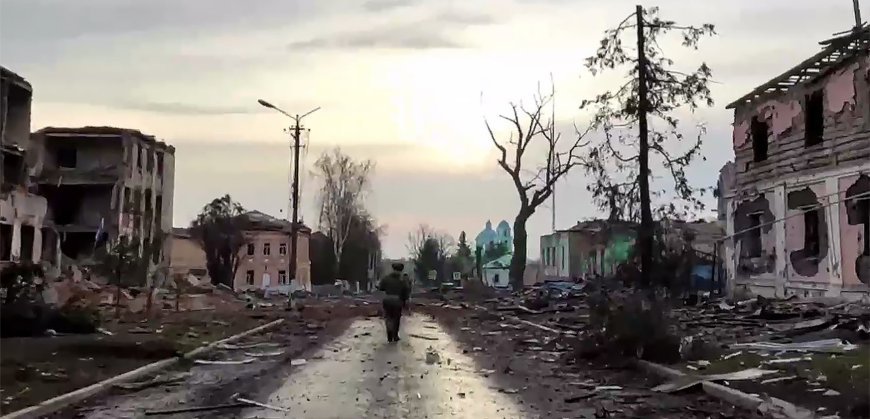Russia-Ukraine War Timeline 2022–2025: What You Haven’t Been Told
Russia-Ukraine war in 2025: drone strikes, peace talks on edge, and a war that refuses to end. What’s really going on?
What’s Happened So Far in the Russia-Ukraine War? Everything You Should Know
It began before dawn on February 24, 2022. Tanks rolled in. Missiles struck. The world watched in disbelief as Russia launched a full-scale invasion of Ukraine. Four years later, the war continues. It is bloody, unyielding, and deeply human.
Start of the Russia-Ukraine War
Russia aimed to take Kyiv within days. They came from the north, the south, and the east. But the plan collapsed. Ukrainians didn’t run. They resisted. Ordinary people lined up for rifles. Farmers towed tanks. Mothers turned metro stations into bomb shelters. Ukraine, with help from Western allies, made the impossible possible. Kyiv stood.
By the end of 2022, Ukrainian forces reclaimed parts of Kherson and pushed Russian troops back from several fronts. But the damage had been done. Cities were in ruins. Families were torn apart.
How the Russia-Ukraine Conflict Turned into a War of Attrition
With momentum stalling, both armies dug in. Russia unleashed a wave of missile and drone strikes on Ukrainian infrastructure. Energy plants, grain terminals, and hospitals were all targeted. Ukraine responded with targeted strikes and limited incursions, even reaching into Russian territory. One of the most startling turns? Reports emerged that North Korean troops had joined Russian operations in Kursk. The conflict was no longer just local. It was drawing in outsiders.
By late 2024, the map hadn’t changed much. But the loss was massive: over a million casualties on both sides, and countless civilians displaced. Russia held around 20 percent of Ukrainian land.
Ukraine Launches Bold Attacks in 2025
This year, Ukraine shifted gears. They started hitting deeper. And harder. In a daring move called Operation Spiderweb, Ukrainian drones struck Russian military airfields far from the front lines. Strategic bombers, some of Russia’s deadliest, were left in smoldering ruins. Then came a bold underwater attack that damaged the Crimean Bridge, cutting off a key supply route to Russian forces in the south.

But as Ukraine showed strength, cracks formed in Western support. The Trump led US administration pulled back military assistance, urging peace talks. Ukraine, still fighting for its sovereignty, wasn’t ready to bow.
Russia-Ukraine Peace Talks See No Breakthrough
Meetings in Saudi Arabia. Then London. Most recently, Istanbul. There were handshakes, headlines, and talk of truces. But no breakthroughs. Russia wants Ukraine neutral and partially dismantled. Ukraine demands its land, freedom, and security. The two visions couldn’t be more different.
The most the latest talks achieved was a prisoner exchange and the return of fallen soldiers. A 30-day ceasefire proposal still hangs in the air, unanswered.
Russia Launches New Offensive on Sumy in June 2025
In recent days, Russia launched a fresh offensive toward Sumy, a northern Ukrainian city near the Russian border. Villages have fallen. Civilians are fleeing again. The city itself is now within range of Russian artillery. It’s a chilling reminder: this war is far from over.
Ukraine’s Energy Crisis Deepens
Ukraine’s energy grid, once a pillar of its economy, now runs at less than 20 percent of its prewar capacity. Entire towns face blackouts. Hospitals ration power. Globally, the ripple effect is real. Food prices are up. Energy markets are tense. Political fault lines are deepening across continents.
And Still, Ukraine Stands
More than 1,200 days since the first air raid siren rang out. Ukraine is battered but unbroken. It’s fighting not just for land, but for dignity. For choice. For the right to exist as a free nation. The world may shift focus. But for those living through this war, it’s not history. It’s today. And every day matters.
FAQs
When did the Russia-Ukraine war begin?
The war began on February 24, 2022, when Russia launched a full-scale invasion of Ukraine from multiple directions, including Belarus and Crimea.
Why did Russia invade Ukraine?
Russia claimed it wanted to “demilitarize and denazify” Ukraine, but most experts believe the real goal was to regain control over Ukraine and stop its move toward NATO and the West.
How has Ukraine responded to the invasion?
Ukraine mounted a strong defense from day one. It pushed back Russian forces near Kyiv, reclaimed parts of Kherson and Kharkiv, and began striking deeper into Russian-held areas in 2025.
Who is supporting Ukraine?
Ukraine has received military aid, intelligence, and humanitarian support from the United States, European Union countries, the UK, and others. However, U.S. military support was reduced in 2025 under President Trump.
What is the current situation in 2025?
As of June 2025, the war continues with new Russian offensives in the Sumy region. Ukraine is carrying out deep-strike operations like Operation Spiderweb and damaging critical Russian infrastructure.

 Admin
Admin 
